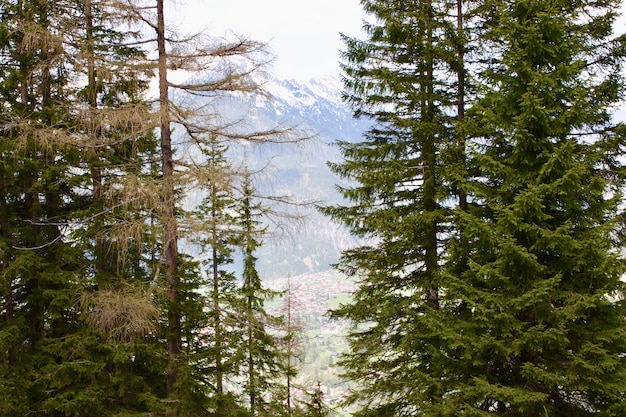
Explore Cedar Breaks National Monument in Southern Utah
Nestled in Southern Utah, Cedar Breaks National Monument spans 6,155 acres of stunning alpine terrain and features a breathtaking canyon amphitheater. Though compact, this hidden gem is perfect for a one or two-day adventure, offering plenty of natural beauty for those looking to explore an often-overlooked national treasure.
Planning Your Trip to Cedar Breaks
Cedar Breaks National Monument sits primarily at over 10,000 feet in elevation, offering impressive views of a canyon amphitheater etched into the Utah landscape. The scenery here evokes memories of Bryce Canyon with a similar amphitheater but fewer hoodoos. Don’t worry, you’ll still spot a few!
What it lacks in hoodoos, Cedar Breaks makes up for with serene alpine vistas, tranquil trails, and a sense of solitude. This compact park allows you to quickly navigate through several scenic overlooks and hikes. Best of all, you’ll likely have the place almost to yourself.
Established in 1933, Cedar Breaks remains relatively unknown, making it a perfect getaway. Its unique geological formations, flora, and fauna, combined with peaceful solitude, create an ideal spot for exploration.
Best Time to Visit
While Cedar Breaks is open year-round, the main road and visitor center close from November to April. Thus, mid-May to mid-October is the best time to visit.
Spring brings chilly, sometimes rainy days, with the landscape awakening from winter. Snow may persist at higher elevations early in the season. Summers are mild due to the high elevation—expect temperatures in the 70s, offering a cool respite from the surrounding areas. Fall is arguably the best time to visit, with temperatures in the 50s-60s, autumn foliage, and generally drier weather. Late fall may see snowfall.
Winter visitors typically snowshoe or cross-country ski into the park. Though I haven’t experienced it myself, it sounds like a magical winter wonderland! A winter-warming yurt serves as a seasonal ranger station and is located near the Alpine Pond Loop.
Activities in Cedar Breaks
The main attractions in Cedar Breaks revolve around its amphitheater, observation points, and hiking trails.
Observation Points:
– Point Supreme: Adjacent to the new contact center, offering one of the best views.
– Chessman Ridge: Situated centrally and is the starting point for the Alpine Pond loop.
– North View: Located at the north end with a small ranger post where you can pay the entrance fee.
– Sunset View: Provides a lovely southern vista.
– Spectra Point: Offers great northern views, though it requires a hike to reach.
– Rampart’s: Stunning perspective into the amphitheater along the South Rim Trail.
– Bartzen: The farthest viewpoint on the South Rim Trail, 2.5 miles away, rarely visited.
Hiking:
– Sunset Trail: A 2-mile, easy paved trail along the rim between Point Supreme and Sunset View.
– Nature Trail: A 0.6-mile connector trail between the campground and the amphitheater.
– Alpine Pond: A moderate 2-mile loop through a forested area, featuring an alpine pond, interesting forest sections, and some amphitheater views. Includes a shortcut.
– South Rim Trail: A moderate to difficult out-and-back trail from Point Supreme, totaling 5 miles. Most turn around at Ramparts as the trail gets tougher beyond that point.
Stargazing:
High elevation and low light pollution make Cedar Breaks a prime location for stargazing. Visitors often stop at overlooks to take in the night sky. Ranger-led summer programs are available; check the official website or ask at the contact station for details.
Where to Stay
Camping:
– Point Supreme Campground: 25 sites available for RVs and tents from June to September.
– Te-ah Campground: Located south of Cedar Breaks with 40 reservable sites.
Hotels and RV Parks:
– Navajo Lake Lodge: Cozy rustic cabins near Navajo Lake.
– Bard Inn: A quaint, homey B&B with friendly hosts and great breakfast.
– Big Yellow Inn: Spacious B&B within walking distance of the university.
– Cedar Canyon: 40 RV sites, plus tents and cabins east of Cedar City.
– Duck Creek: A small RV park in Duck Creek Village with three sites.
– Cedar City RJourney: A large RV park in Cedar City.
Visitor Information
The visitor center is open from June to mid-October and is located at 4730 UT-148, Brian Head, UT 84719. A new contact station is also available near Point Supreme Overlook, offering exhibits and ranger information.
Altitude:
The park sits above 10,000 feet, so be prepared for altitude sickness. Stay hydrated and avoid long hikes if you’re not acclimated.
Fees:
– $10 per person (ages 16+)
– National Park Annual Pass is accepted.
Getting to Cedar Breaks
Cedar Breaks is about a 45-minute drive from Cedar City along UT-148, accessible from both the north and south entrances.
Distances to Cedar Breaks:
– Duck Creek Village: 17 miles (30 minutes)
– Cedar City: 26 miles (40 minutes)
– Bryce Canyon National Park: 55 miles (1.5 hours)
– St. George: 77 miles (1.5 hours)
– Zion National Park (Springdale): 85 miles (2 hours)
– Las Vegas: 200 miles (3.5 hours)
– Salt Lake City: 248 miles (4 hours)
By Air:
Cedar City Regional Airport (CDC) is the nearest airport but offers limited flights. St. George Regional Airport (SGU) is a better option, though still small. Salt Lake City (SLC) and Las Vegas (LAS) are about four hours away.
Tips & FAQs:
– Be cautious of altitude sickness.
– Prepare for variable weather conditions.
– Bring water, sunscreen, and good footwear.
– Stay for stargazing; it’s a highlight of the park.
Other Posts You May Like:
– “Epic Utah Road Trip Guide: Zion to Bryce Canyon”
– “21 Best Things to Do in Bryce Canyon National Park”
– “Explorer’s Guide to Utah’s Arches National Park”
– “Best Things to Do in Page, Arizona”
– “15 Amazing Things to Do in Petrified Forest National Park”